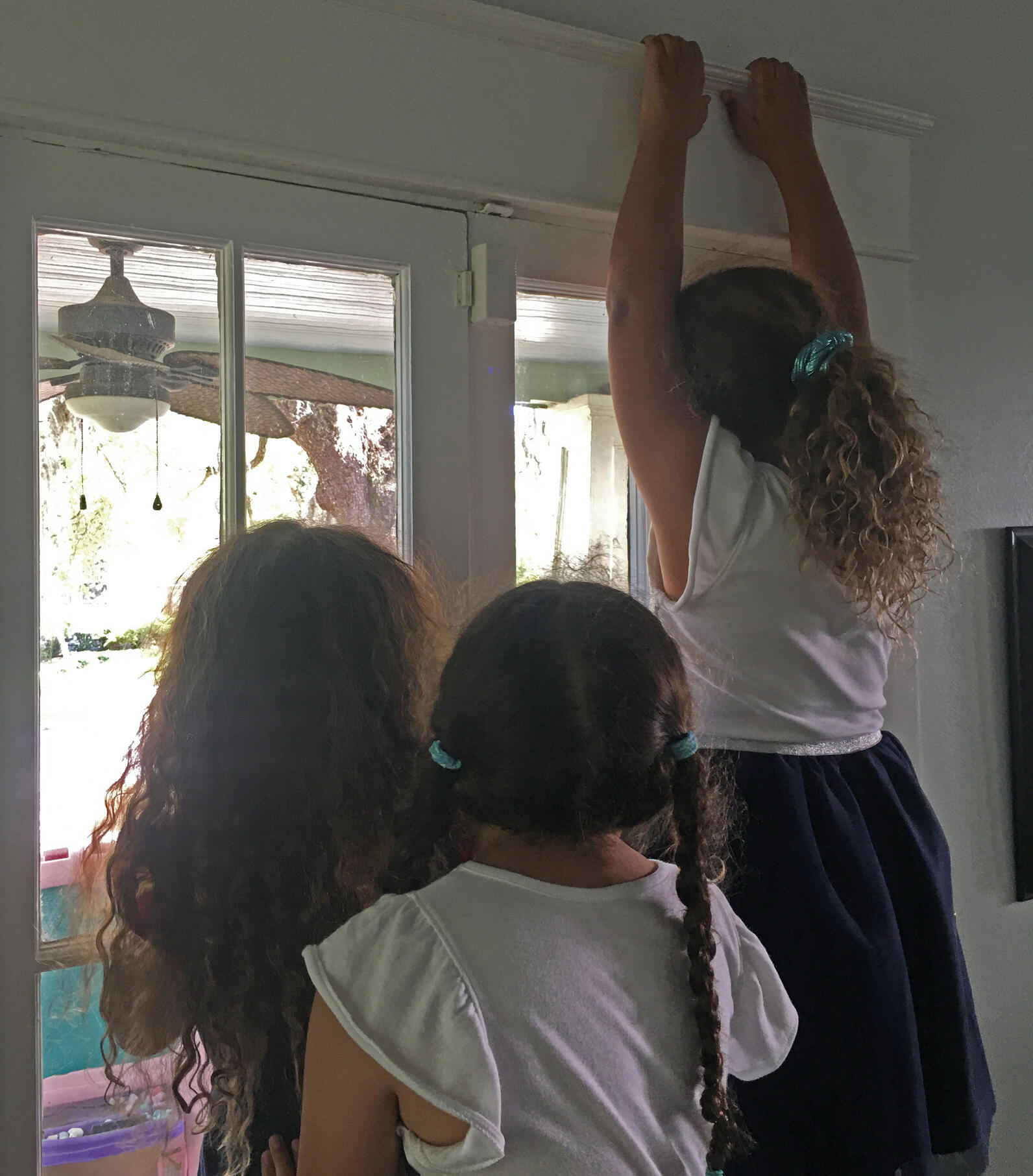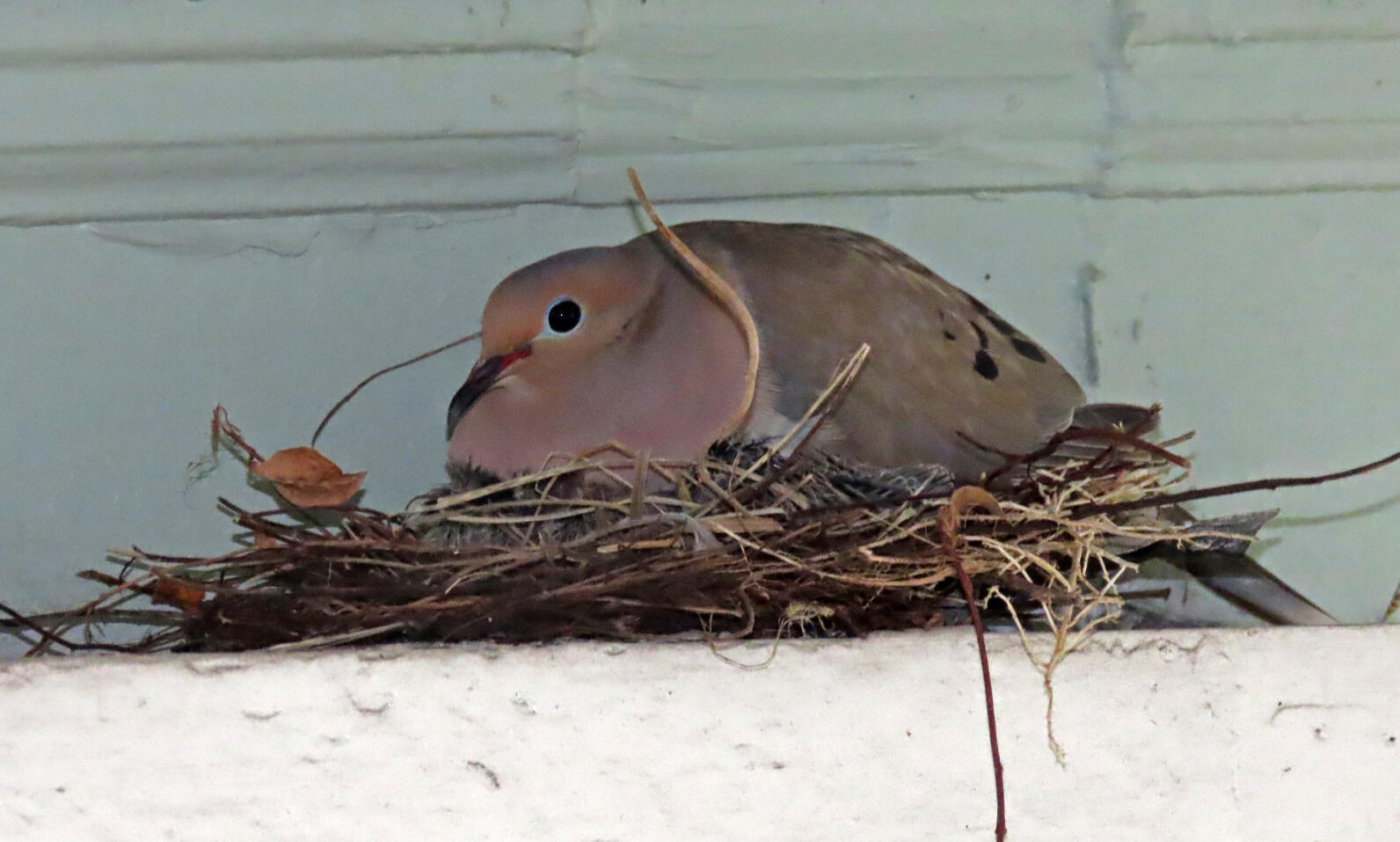In mid-April, Mark Rachal, Sanctuary Manager of Audubon’s Florida Coastal Island Sanctuaries, took a few quiet minutes in the car to answer emails. Looking up from his driveway, he noticed a Mourning Dove flying in and out of his front porch, carrying nesting materials.
“That’s interesting,” he thought, but returned to his work without thinking more of it.
Rachal usually spends his days monitoring wading and shorebirds at the Sanctuaries in Tampa Bay, spending little if any time watching doves. A few days later, however, a nest had appeared at the top of one of his porch columns, starting his family’s love affair with this Mourning Dove family.
Mourning Doves are one of the most common species in America, found across the country in suburban and urban environments. 350 million birds spend their time in Mexico, the United States, and Canada, They feed on seeds almost exclusively, and are active at bird feeders.
For the next few weeks, Rachal, his wife, and their three daughters watched the nest every day, from the successful fledging of the first brood to the laying of the second round of eggs.
It was an especially important learning experience for the kids, Rachal explained. When moving across the porch they would be extra careful and quiet, showing their friends the fluffy chicks and watching the baby birds grow and develop through a nearby window.

Eventually the parent dove would leave the nest from time to time to forage for food, and Rachal would receive panicked phone calls asking him when she would return, how long she would be gone, and if they should do anything in the meantime.
Luckily, Rachal has worked with birds for decades, and knew that the best thing for baby birds is to leave them in the nest and wait for the parents to return.
In just a few days, the second brood will hatch, and Rachal’s family will have a whole new family to watch over.
Because Mourning Doves can live to be thirty years old, “Who knows," Rachal says, "Maybe someday my kids will watch these chicks with their own children!”





